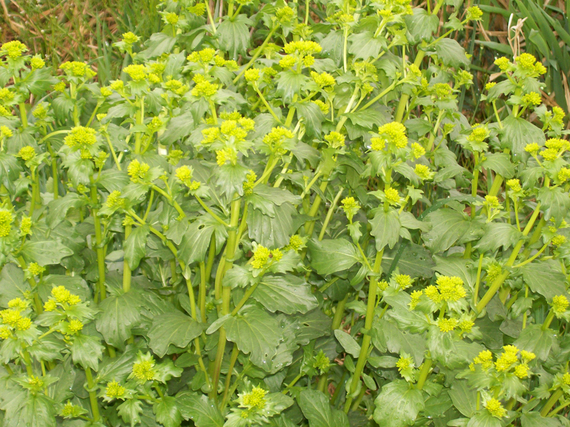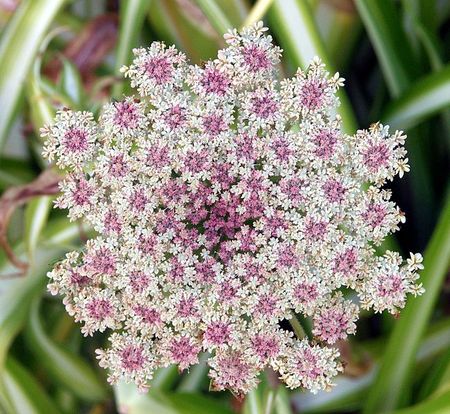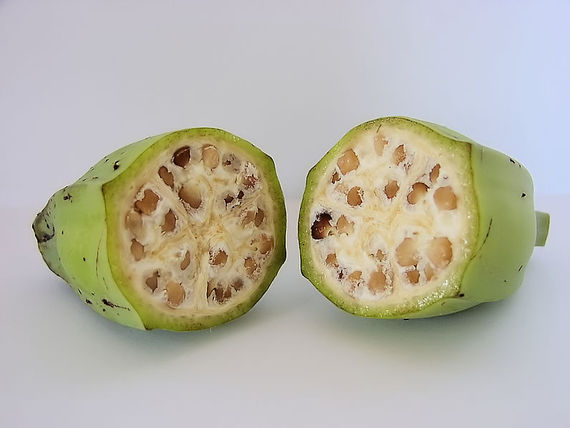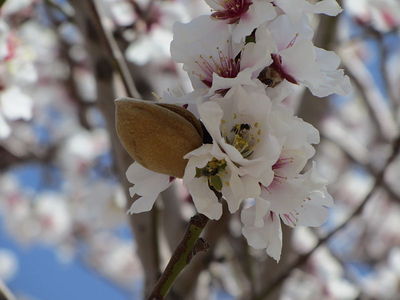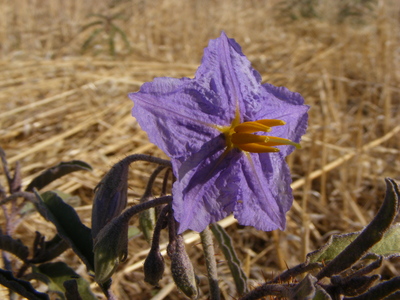Food integrity is front page news. Organic, all-natural, grass-fed, free range, locavore, paleo diet, vegan, pescatarian, and a slew of other fads and philosophies define how people eat, and each claims to shun modification while embracing foods that your body was "designed" to eat, namely natural fruits and vegetables. However, some of the most basic "all-natural food" we eat, never existed anywhere in "nature" before human beings modified and exploited them for consumption.
Below are five common fruits and veggies you might want to get to know a little better...
1. Broccoli (Brassica oleracea)
This wildflower produces stalks 3-7 feet high with tiny yellow buds at the top. Through domesticated humans took this thin-stalked, giant flower, and turned it into the dense green stalk thing smothered in Velveeta. However, the broccoli modification goes much further.
Cauliflower, kale, cabbage, lettuce, and even brussel sprouts are all the exact same species -- brassica oleracea. Humans have just bred them for different taste preferences. Now pick your jaw up off the floor and finish your flowers.
2. Carrots (Daucus carota)
Wild carrots are small flowering plants as well. The tuberous taproot of the plant is what we commonly refer to as a "carrot" and while the wild carrot is technically edible, it's only safe when it's young. Soon after adolescence, the taproot grows too woody, and contact with wild carrot leaves can lead to a nasty case of phytophotodermatitis -- painful lesions that come from reaction to UV light.
3. Bananas (Musa acuminata)
Modern bananas, commonly called "Cavendish" bananas, are so far removed from their wild brethren that they can't even reproduce without human intervention. We've bred the seeds out of them. Think about that for a second; breeding the ability to breed out of a species. Sounds delicious.
This means that every banana consumed in the last few decades is a clone from the same cutting, so don't complain that someone else has a bigger banana, because they're literally all the same.
4. Almonds (Prunus amygdalus)
The history of wild almond is amazing. Actually not a nut, but a seed from the almond tree (a relative of the peach and prune trees), the almond fruit contains glycoside amygdalin, which transforms into hydrogen cyanide after crushing, or even chewing. Apparently as little as a dozen wild almonds contains enough cyanide to be fatal.
Yet despite their poisonous nature, almonds are one of the more ancient examples of domestication, appearing as early as the Bronze Age (3000 B.C.E). The interesting thing is that no one knows how early humans figured out which almond trees didn't contain tons of cyanide. Seriously, no one knows. Apparently people loved almonds enough to keep trying different trees until they stopped dying, then bred those. Guess that's why a tiny bag costs $11.
5. Tomatoes (Solanum lycopersicum)
Wild tomato is a close relative of poisonous nightshade, and even domesticated tomatoes contain toxins like tomatine and solanine. Over-consumption, especially of the leaves, or the use of leaves to make tea, can cause death. One of the more poisonous iterations of the species, Solanum wallacei, is a purple flowering plant, similar in look to domesticated tomato. It will kill you.
A balanced diet is important, and awareness of where and how your food is prepared is essential, but don't forget that most of what ends up on your dinner table, no matter your dietary preference, is the result of centuries of careful domestication and manipulation of calorie-poor, often poisonous, wild fruits and vegetables. Yum!
For more science on the topic of ancient foodstuffs, enjoy Christina Warninner's TEDTalk: Debunking the Paleo Diet.
